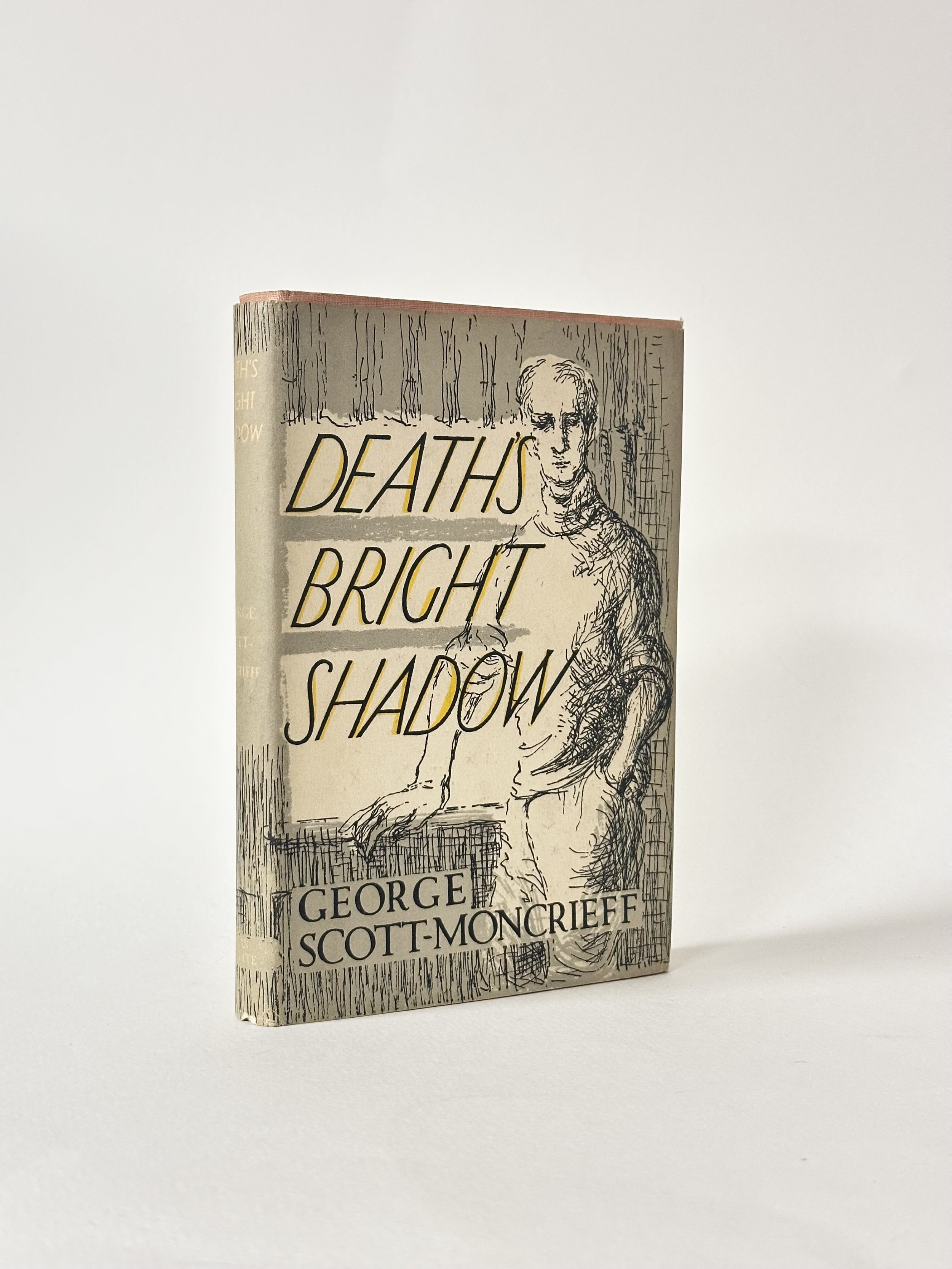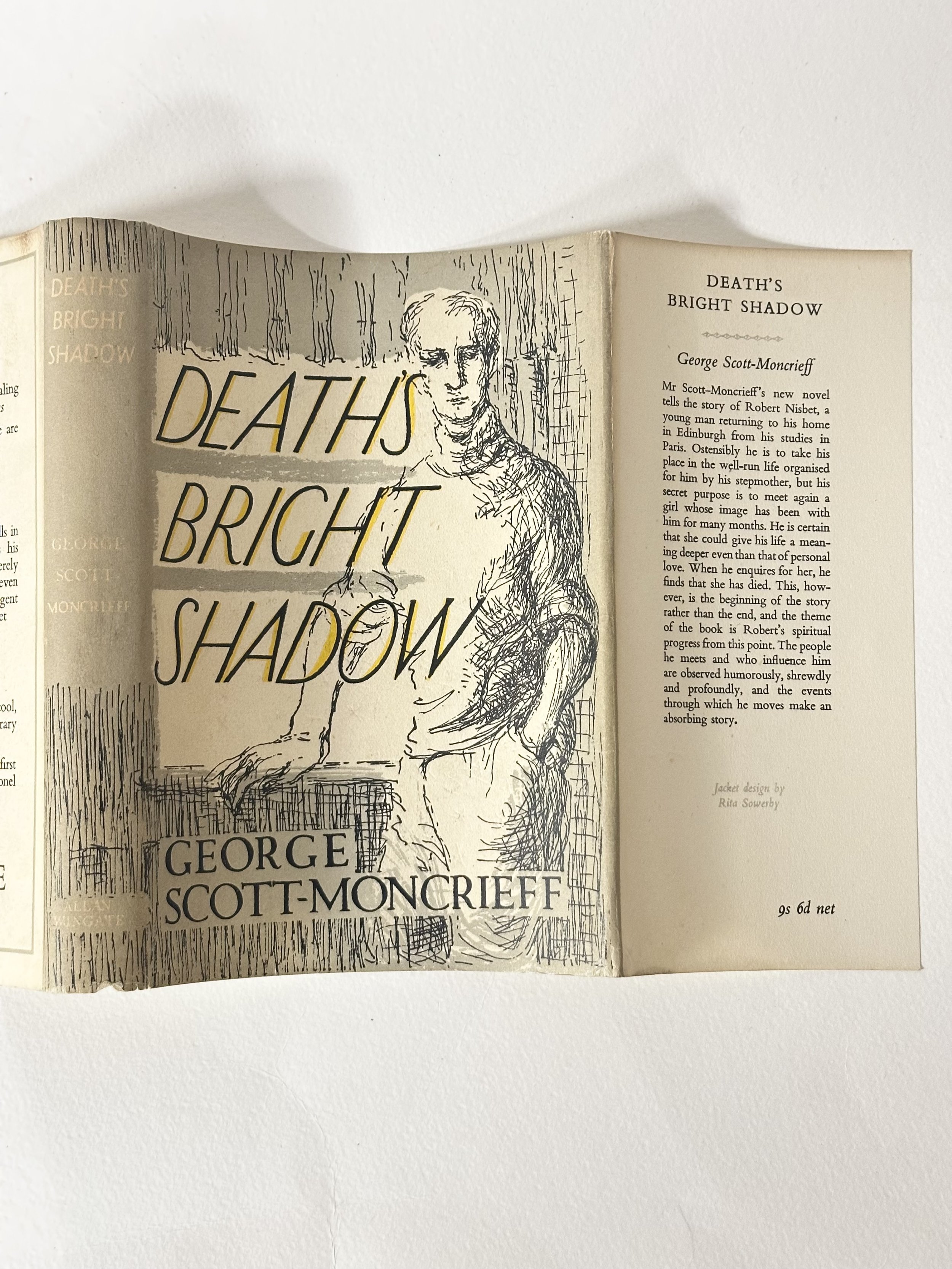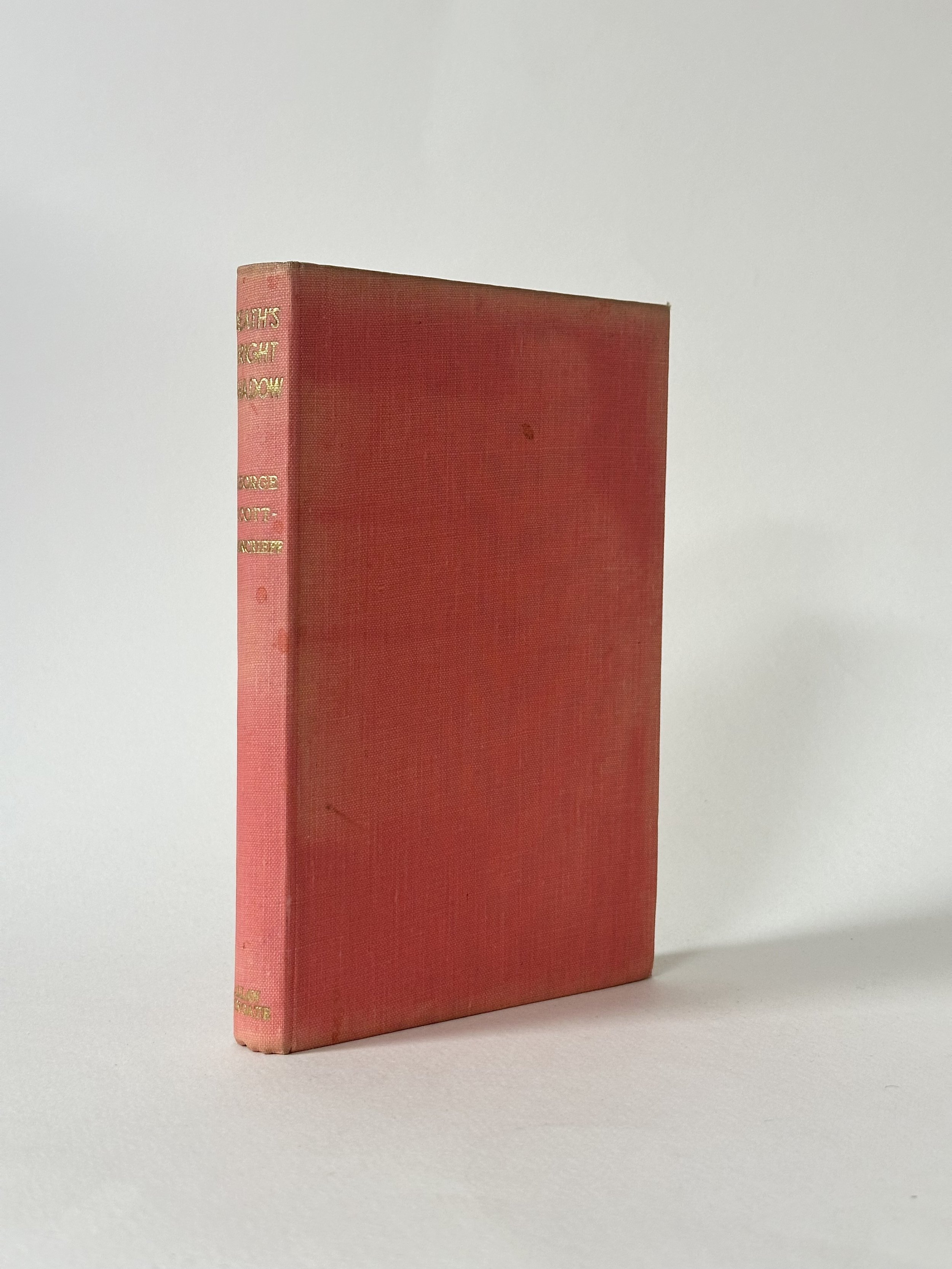 Image 1 of 5
Image 1 of 5

 Image 2 of 5
Image 2 of 5

 Image 3 of 5
Image 3 of 5

 Image 4 of 5
Image 4 of 5

 Image 5 of 5
Image 5 of 5






SCOTT-MONCRIEFF, George. Death's Bright Shadow
SCOTT-MONCRIEFF, George. Death's Bright Shadow. London: Allen Wingate. 1948. 8vo. First edition. Publisher’s salmon cloth lettered in gilt to the spine, in the dust jacket designed by Rita Sowerby. A very good copy, the cloth a little discoloured, presumably a production issue, the spine tips and corners gently bumped. but the textblock clean and bright throughout, slight offsetting to endpapers. The dust jacket unclipped (9s 6d net), the spine gently faded, else fine. A sharp copy.
George Scott-Moncrieff, nicknamed Scomo by his various friends in the Scottish literati—moved to the Isle of Eigg off the west coast of Scotland after the death of two brothers during the Second World War, and more catastrophically, his first wife, aged 29. It is here he wrote Death’s Bright Shadow, a cathartic homage to his beloved Scotland, and his allegiance with the Christian faith. Aside from a couple of supposedly stellar though frustratingly impossible to find London novels published in the 30s, GSM became a leading figure on Scottish nationalism, topography, religion, its nature, its people, and everything in between. Though quietly forgotten, he remains one of Scotland’s most endearing twentieth century authors. Scarce.
SCOTT-MONCRIEFF, George. Death's Bright Shadow. London: Allen Wingate. 1948. 8vo. First edition. Publisher’s salmon cloth lettered in gilt to the spine, in the dust jacket designed by Rita Sowerby. A very good copy, the cloth a little discoloured, presumably a production issue, the spine tips and corners gently bumped. but the textblock clean and bright throughout, slight offsetting to endpapers. The dust jacket unclipped (9s 6d net), the spine gently faded, else fine. A sharp copy.
George Scott-Moncrieff, nicknamed Scomo by his various friends in the Scottish literati—moved to the Isle of Eigg off the west coast of Scotland after the death of two brothers during the Second World War, and more catastrophically, his first wife, aged 29. It is here he wrote Death’s Bright Shadow, a cathartic homage to his beloved Scotland, and his allegiance with the Christian faith. Aside from a couple of supposedly stellar though frustratingly impossible to find London novels published in the 30s, GSM became a leading figure on Scottish nationalism, topography, religion, its nature, its people, and everything in between. Though quietly forgotten, he remains one of Scotland’s most endearing twentieth century authors. Scarce.
